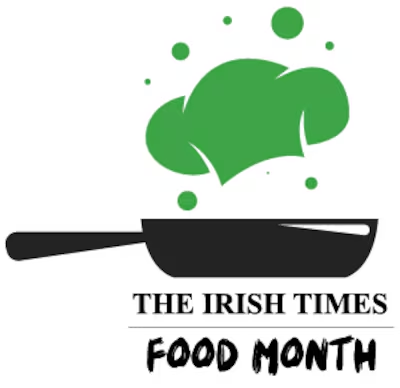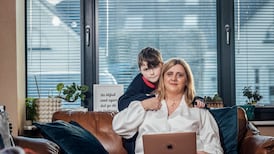I was in the west of Ireland on holiday recently, when the leaves were finally falling and the mushrooms were rising from the damp wooded ground. They popped up from between clumps of wet leaves, at the base of mossy trees, and just about everywhere I looked. I regarded them with interest and wariness. I knew these things could kill you. Well, some of them could definitely make you sick if you ate the wrong ones.

I was on a road trip with an American friend, Julie, who was visiting from California. She had never been to Ireland before and, along with exclamations about the western coastal vistas we were seeing on a daily basis, she was also in deep thrall to the texture of the rural landscape.
Julie is an investigative journalist. She is also a forager. Among the gifts she had brought were five dropper bottles of home-made bitters, from items she had foraged. There were desert botanicals; a ginger rose infusion; a citrus infusion; a herb infusion; and a lavender and rose infusion. She makes salads from wild greens she finds out walking, or that grow in the canyon in front of her house. She knows her mushrooms. She knows berries and wild flowers and herbs and sea spinach and cactus, and that all of these can be transformed into food.
I thought of my uncle with awe, like some kind of magician: conjuring food from a field where I saw no food
At the Airbnb we were staying in at one point in rural Kerry, I went to say hello to our host, who lived nearby. She mentioned in passing that one of her neighbours had called by the previous day with a bag full of foraged mushrooms. He is German.
“He told me you could live off the land here,” she said, astonished. “I have never touched a wild mushroom in my life. How would you know what was safe?”
Poisonous
That’s the thing, though. We were – or certainly I was – brought up to avoid picking any mushrooms, in case some of them should prove either poisonous or very bad for you. Erring on the side of caution seemed the soundest advice when it came to what we ate from the wild in Ireland, most particularly mushrooms. Only once I have ever eaten wild mushrooms – as a child on my uncle’s farm. He came in from milking with handfuls of big, brown flatcap mushrooms he had found in the field on the way home. My aunt sliced and cooked them in a pan with butter for breakfast. They were delicious, and I thought of my uncle with awe, like some kind of magician: conjuring food from a field where I saw no food.
Nobody should be eating berries or mushrooms from the wild that they are unsure about, no matter how many images you study on Google. The only reliable source is a trusted and experienced forager, who knows exactly what they are looking at. But what the woman in the Airbnb had said stayed with me, about never touching a wild mushroom because of not knowing what was safe. It stayed with me because that had been my experience too.
Why, I wondered, had we not turned this narrative around? So instead of growing up being instructed by adults not to eat anything wild, in particular mushrooms, children were instead taught what was safe to eat and what was not? We learn from an early age that we mustn’t run across the road without looking, or to be careful climbing structures that are very high, or any of a myriad ways to navigate the world safely. It’s good to be taught how to keep yourself safe, but on holiday last week, it was troubling for me to reflect on how shamefully ignorant I was about the abundant natural world that surrounds us in Ireland.
Generic green
As we drove around the west, my friend Julie saw food everywhere. I only saw generic green, and ferns, and what I vaguely assumed were weeds. She picked gorse blossoms, and rose hips, and crab apples. Pine needles, oak leaves, blackberries, mint, rosemary, dandelions, pine cones, seaweed. Most were for infusing for botanical bitters, and some, like the seaweed, for pickling. She called the yellow gorse “the Irish cactus” because the thorns nipped her fingers when she gathered the blossoms. No walk was embarked on without a foraging bag at the ready.
She showed me mustard greens growing on a Connemara beach, then wild bitter cress, nettles, nasturtiums and dandelions. All salad components. Or the makings of what she called a “green soup”.
“You can’t put dandelion leaves in a salad,” I said. To me, they are weeds.
“Yes, you can,” she said. “Young leaves, and you use the petals to scatter on top. You don’t eat the stem.”
I love the home-made botanical bitters Julie brought, but her real gift was provoking my curiosity about foraging, and wanting to try it myself
By the time Julie was heading back to the airport, I had decided to take ownership of my shameful ignorance. In the spring, I am going to seek out a foraging course and learn what I can. It seems crazy not to know more – or anything much at all – about the free, wild larder that surrounds us, particularly at this time when the entire world is trying to be sustainable.
I love the home-made botanical bitters Julie brought, but her real gift was provoking my curiosity about foraging, and wanting to try it myself. Next year, when the mushrooms pop up again, I might even know which ones are safe to eat.












